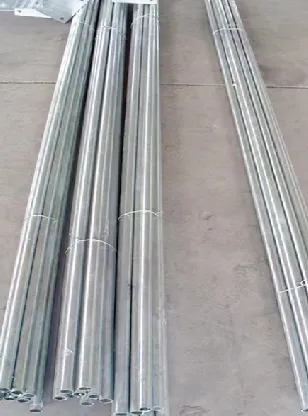loading...
- No. 9, Xingyuan South Street, Dongwaihuan Road, Zaoqiang County, Hengshui, Hebei, China
- admin@zjcomposites.com
- +86 15097380338
- Welcome to visit our website!
Innovative Approaches to Reverse Osmosis for Effective Water Treatment Solutions
Reverse Osmosis Water Treatment A Comprehensive Overview
Water is essential for life, and ensuring its quality is crucial for health and well-being. In recent years, reverse osmosis (RO) has emerged as one of the most effective methods for purifying water, making it suitable for drinking and industrial applications alike. This article will explore the principles of reverse osmosis, its applications, advantages, and potential limitations.
What is Reverse Osmosis?
Reverse osmosis is a water purification process that uses a semi-permeable membrane to remove impurities and contaminants from water. The process works by applying pressure to the water on one side of the membrane, forcing it through the membrane and leaving behind dissolved salts, bacteria, and other impurities. The clean water, or permeate, is collected on the other side, while the concentrated contaminants are discarded.
The Process of Reverse Osmosis
The reverse osmosis process involves several key steps. First, water is pre-treated to remove larger particles and chlorine, which can damage the RO membrane. This pre-treatment may involve sedimentation, filtration, and carbon treatment to ensure optimal performance. Once pre-treated, the water is fed into the RO system, which typically consists of high-pressure pumps that generate the necessary pressure to drive the water through the membrane.
The semi-permeable membrane is designed with tiny pores that allow water molecules to pass through while blocking larger molecules and impurities. As the water travels through the membrane, the contaminants are left behind, resulting in two streams the purified permeate and the concentrated waste stream, known as brine.
Applications of Reverse Osmosis
Reverse osmosis is utilized in various applications across multiple sectors. One of the most common uses is in residential water purification systems. Many households employ under-sink RO systems to ensure they have access to clean drinking water free from contaminants such as lead, chlorine, and nitrates.
In industrial settings, reverse osmosis is often used for desalination, a process that converts seawater into fresh water. This application is particularly vital in arid regions where freshwater sources are scarce. Additionally, RO is employed in food and beverage industries to concentrate juices and other liquids, ensuring product consistency while reducing transportation costs.
reverse osmosis water treatment

Advantages of Reverse Osmosis
The reverse osmosis process offers numerous advantages that make it a preferred choice for water treatment. Firstly, it effectively removes a wide range of contaminants, including dissolved salts, heavy metals, and microorganisms. This capability ensures that the purified water is safe and suitable for various applications.
Secondly, reverse osmosis systems are relatively easy to operate and maintain. With proper care, RO systems can provide consistent water quality over extended periods. Moreover, advances in technology have led to the development of more efficient membranes and systems that require less energy, making them more sustainable.
Reverse osmosis is also customizable, allowing users to tailor the system to their specific needs. Various configurations and pre-treatment options can be designed to address particular contaminants or water quality concerns, ensuring that users receive the best possible water treatment solution.
Limitations of Reverse Osmosis
Despite its advantages, reverse osmosis is not without limitations. One of the primary concerns is the waste generated during the process. The brine produced can be challenging to dispose of properly, particularly in areas with strict environmental regulations. Additionally, the energy required to generate the necessary pressure can be significant, leading to higher operational costs.
Another limitation is that reverse osmosis systems can remove beneficial minerals from water along with harmful contaminants. This can result in water that lacks essential minerals, which may affect taste and nutritional value. To mitigate this issue, many RO systems incorporate remineralization filters to add beneficial minerals back into the purified water.
Conclusion
Reverse osmosis is a powerful water treatment technology that plays a critical role in ensuring access to clean and safe water. Its effectiveness in removing a wide range of contaminants, combined with versatility and ease of use, makes it an ideal choice for both residential and industrial applications. However, users should remain aware of its limitations and consider the best practices for optimal performance and sustainability. As water scarcity issues continue to grow globally, the importance of efficient purification technologies like reverse osmosis will only increase.
-
Why Choose a Galvanized Water Tank for Your Storage NeedsNewsMay.21,2025
-
The Strength and Durability of FRP GratingNewsMay.21,2025
-
The Importance of Water Treatment Systems for Clean and Safe WaterNewsMay.21,2025
-
The Advantages of FRP Rebar for Construction ProjectsNewsMay.21,2025
-
Say Goodbye to Hard Water with a Reliable Water SoftenerNewsMay.21,2025
-
Maximize Your Water Storage with a Sectional Water TankNewsMay.21,2025
-
The Power of Filter VesselsNewsMay.19,2025
